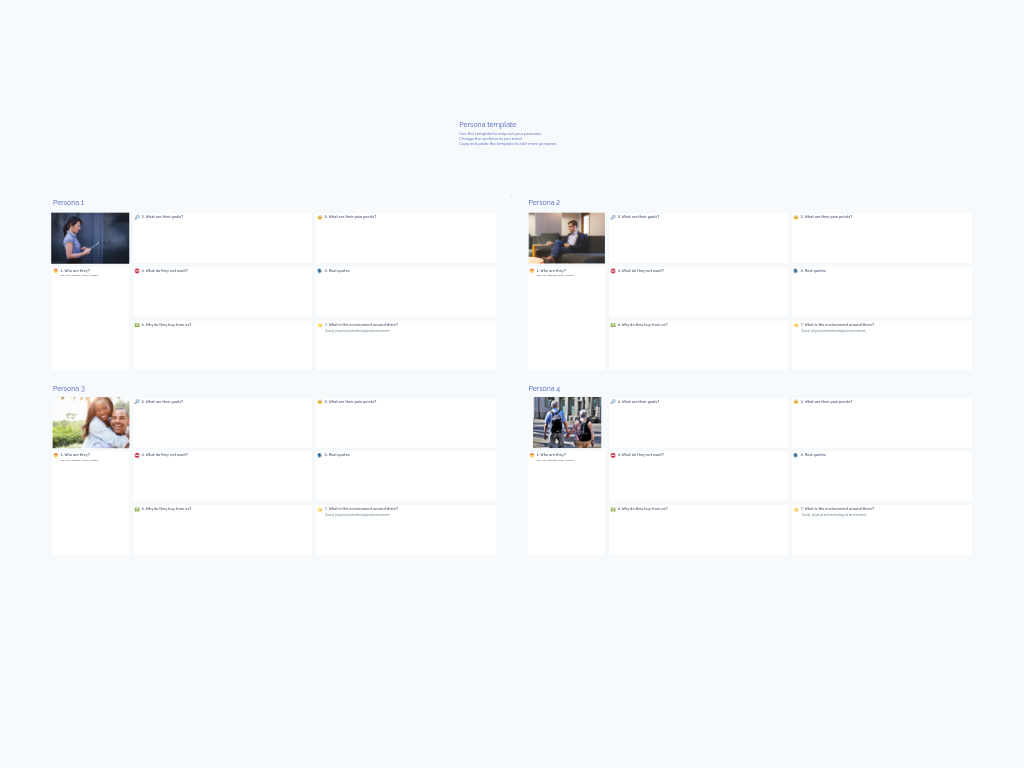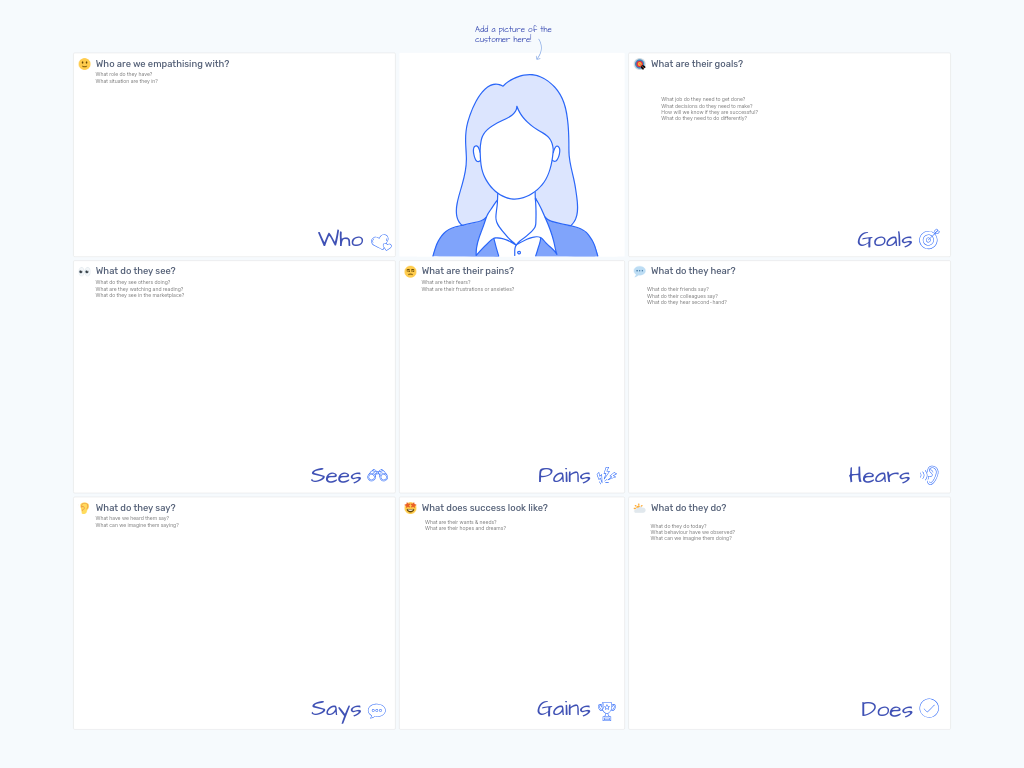User Personas Template: Create Detailed Customer Profiles for Product Development
Bring your user personas to life with this collaborative template designed for product teams who need to understand their customers deeply. This template provides a structured yet flexible framework for creating comprehensive customer profiles that can guide product decisions and development priorities.
What Is a User Persona?
A user persona is a semi-fictional representation of your ideal customer based on market research and real data about your existing users. Personas help product teams build empathy with users by putting a human face on abstract user data. Rather than designing for everyone (which often means designing for no one), personas allow you to focus on specific user types with distinct needs, behaviors, and goals.
Benefits & When to Use User Personas
User personas are invaluable throughout the product development lifecycle:
- Early in product development: Establish who you're building for before writing a single line of code
- During feature prioritization: Evaluate potential features against the needs of your core personas
- When making design decisions: Guide UX/UI choices based on persona preferences and behaviors
- In marketing strategy development: Create messaging that resonates with specific user segments
- During team onboarding: Help new team members quickly understand who your users are
Well-crafted personas transform abstract user data into relatable characters that everyone on your team can reference, reducing misunderstandings about who you're serving.
How to Run a User Persona Creation Session
Prepare your research (Before the session - 1-2 weeks)
- Gather customer interviews, survey data, support tickets, and analytics
- Identify patterns and potential user segments
Set up the template (5 minutes)
- Duplicate the template for each persona you plan to create (typically 3-5)
- Review the seven core sections with your team
Create demographic profiles (15-20 minutes)
- Fill in the "Who are they?" section with demographic details
- Add representative images to help visualize each persona
Define goals and motivations (20 minutes)
- Document what each persona is trying to achieve
- Focus on both practical and emotional goals
Identify pain points and frustrations (20 minutes)
- Capture the specific challenges each persona faces
- Note which pain points your product could potentially solve
Document boundaries and preferences (15 minutes)
- In the "What do they not want?" section, clarify dealbreakers and turnoffs
- Identify experiences your persona actively avoids
Add authenticity with real quotes (10 minutes)
- Include verbatim statements from real users who fit this persona
- These will add credibility and emotional resonance
Clarify buying motivations (15 minutes)
- Explain why this persona chooses your product over alternatives
- Identify their primary value drivers
Map their environment (15 minutes)
- Describe the social, physical, and technological context in which they use your product
- Consider constraints and enablers in their environment
Review and refine (20 minutes)
- Cross-check personas against your research
- Ensure they're distinct enough to be useful but realistic enough to be credible
Tips for a Successful Persona Creation Session
- Keep personas evidence-based: Avoid creating aspirational personas that don't reflect your actual or potential users
- Update regularly: Treat personas as living documents that evolve as you learn more about your users
- Use real names and photos: This helps team members relate to personas as real people rather than abstractions
- Include negative details: Don't paint an overly rosy picture; include frustrations and limitations
- Limit your personas: Having too many personas dilutes their effectiveness; focus on 3-5 key segments
- Make them accessible: After creation, store personas where everyone on the team can easily reference them
- Add specificity: "30-year-old marketing manager who uses Instagram daily" is more useful than "young professional"
Remember that personas are most valuable when they're actively referenced in product discussions. After creating them, encourage your team to regularly ask, "How would [Persona Name] respond to this feature?" to keep user needs at the center of your development process.



